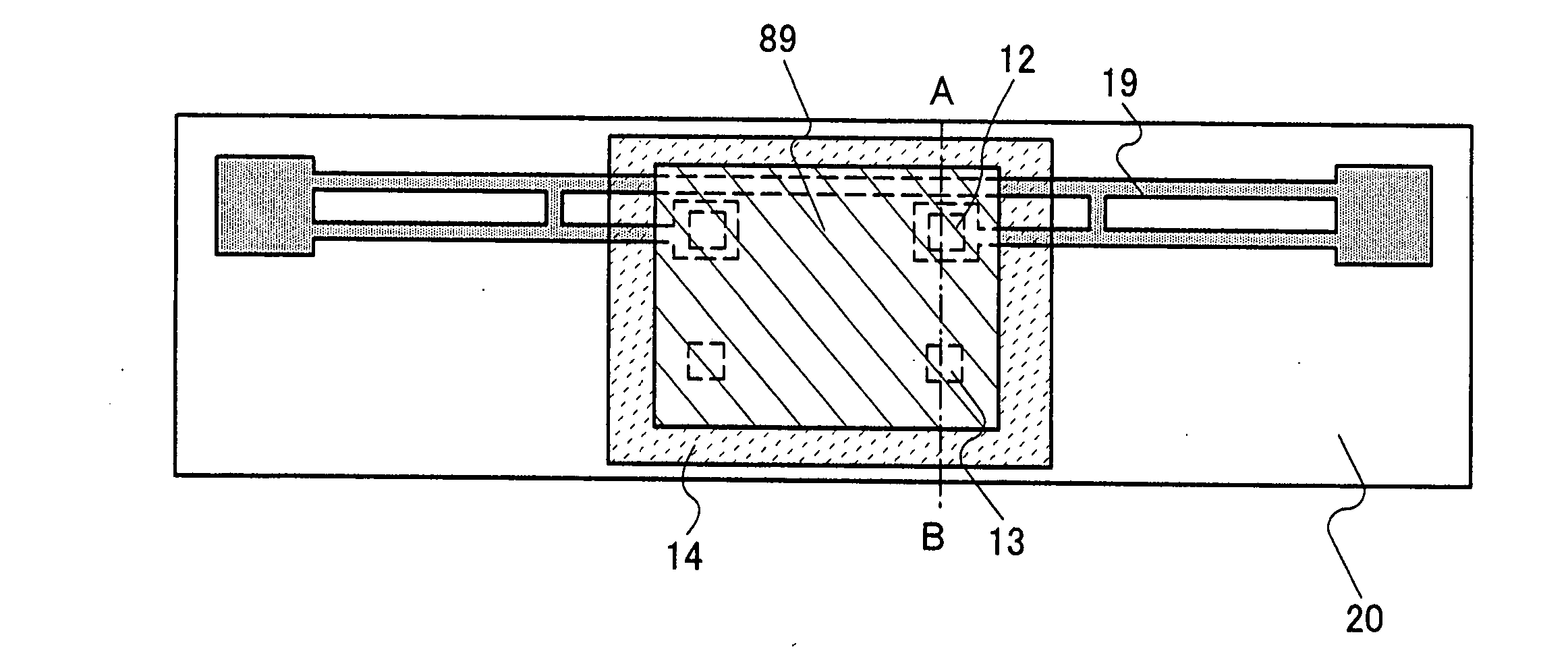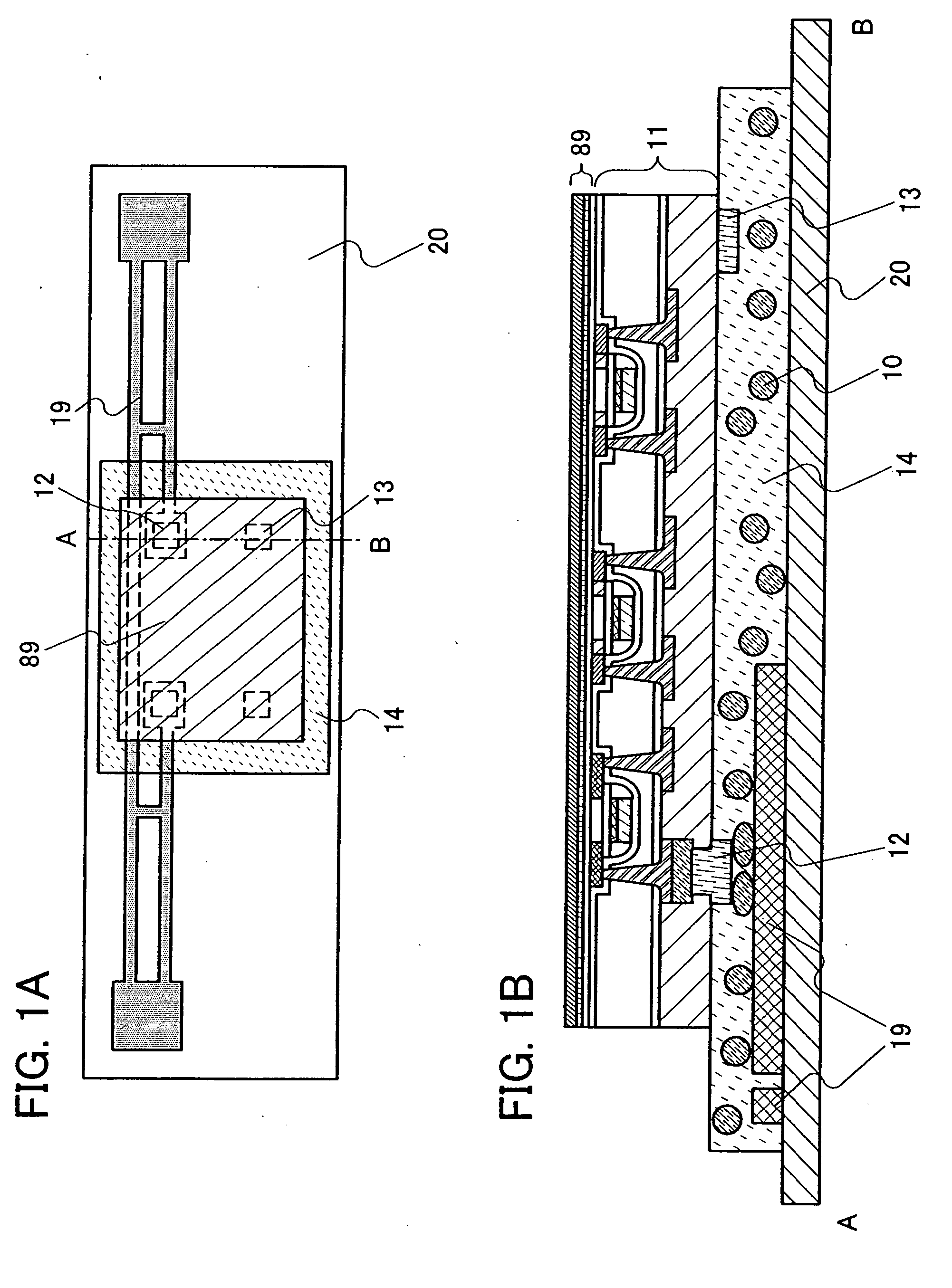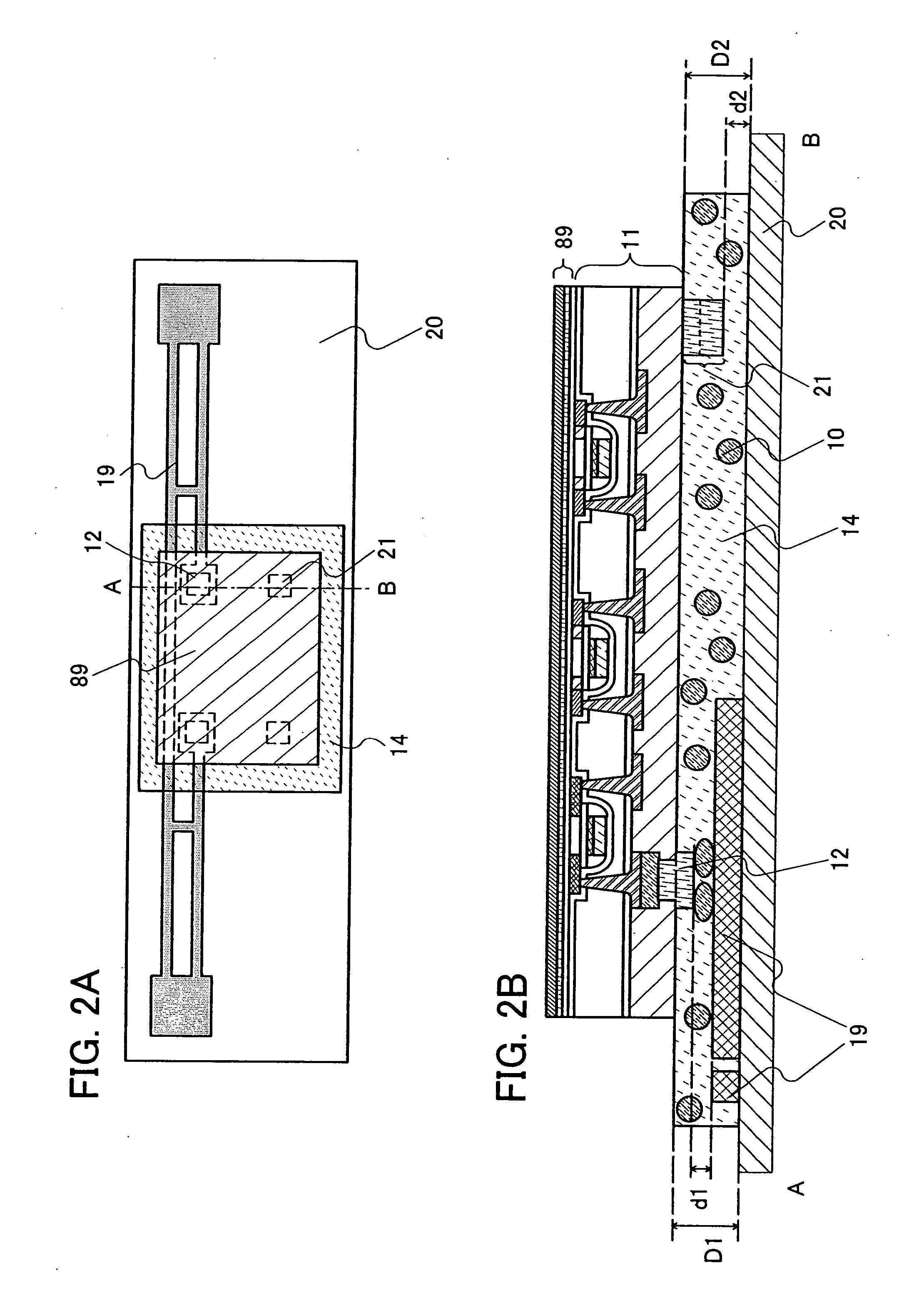Semiconductor device
a technology of semiconductor devices and semiconductors, applied in semiconductor devices, semiconductor/solid-state device details, instruments, etc., can solve the problems of weak dynamic stress, short communication distance, easy destruction, etc., and achieve the effect of improving the mechanical strength of the joining against bending stress applied from various directions, improving the strength, and improving the mechanical strength at the joining poin
- Summary
- Abstract
- Description
- Claims
- Application Information
AI Technical Summary
Benefits of technology
Problems solved by technology
Method used
Image
Examples
embodiment mode 1
(Embodiment Mode 1)
[0051] A structure of a semiconductor device in this embodiment mode is described with reference to FIGS. 1A and 1B, and 2A and 2B. FIG. 1B is a cross-sectional diagram along a line A-B of a top diagram of FIG. 1A. FIG. 2B is a cross-sectional diagram along a line A-B of a top diagram of FIG. 2A.
[0052] A substrate 89 and a substrate 20 are provided such that one surface of the substrate 89 and one surface of the substrate 20 face each other. On the one surface of the substrate 89, a layer 11 including an integrated circuit is formed (see FIG. 1B and FIG. 2B). Over the layer 11 including the integrated circuit, a terminal 12 which is electrically connected to a wiring included in the layer 11 including the integrated circuit is provided. Note that the layer 11 including the integrated circuit includes a plurality of transistors. The terminal 12 is electrically connected to a conductive layer 19 which functions as an antenna formed on the one surface of the substra...
embodiment mode 2
(Embodiment Mode 2)
[0057] This embodiment mode describes a structure of a semiconductor device of which the shape is different from the semiconductor device described in Embodiment Mode 1, with reference to FIGS. 3A and 3B. This embodiment mode is different from the structure described in Embodiment Mode 1 in that a layer formed of a conductive material is provided in addition to a conductive layer which functions as an antenna, for a substrate provided with the conductive layer which functions as the antenna on one surface thereof. Note that description of the same points as Embodiment Mode 1 is omitted.
[0058] As shown in FIGS. 3A and 3B, an element of the invention includes the pseudo terminal 13 over the layer 11 including the integrated circuit. Note that the number and position of the pseudo terminals of the invention are not limited to the structure shown in the drawing. That is, the position and number of the pseudo terminals can be freely changed as long as the pseudo termi...
embodiment mode 3
(Embodiment Mode 3)
[0063] An embodiment mode of the invention is described with reference to FIGS. 4A and 4B. This embodiment mode describes a structure of a semiconductor device of which the shape is different from those of Embodiment Mode 1 and Embodiment Mode 2. This embodiment mode is different from Embodiment Mode 1 and Embodiment Mode 2 in the shape of the conductive layer which functions as the antenna and in that a plurality of terminals (hereinafter abbreviated as auxiliary terminals) which are electrically connected to the conductive layer which functions as the antenna, in addition to the terminal which is electrically connected to the conductive layer which functions as the antenna are provided. Note that description of the same points as Embodiment Mode 1 is omitted.
[0064] As shown in FIGS. 4A and 4B, over the layer 11 including the integrated circuit, an auxiliary terminal 24 which is electrically connected to both of the wiring included in the layer 11 including the ...
PUM
 Login to View More
Login to View More Abstract
Description
Claims
Application Information
 Login to View More
Login to View More - R&D
- Intellectual Property
- Life Sciences
- Materials
- Tech Scout
- Unparalleled Data Quality
- Higher Quality Content
- 60% Fewer Hallucinations
Browse by: Latest US Patents, China's latest patents, Technical Efficacy Thesaurus, Application Domain, Technology Topic, Popular Technical Reports.
© 2025 PatSnap. All rights reserved.Legal|Privacy policy|Modern Slavery Act Transparency Statement|Sitemap|About US| Contact US: help@patsnap.com



